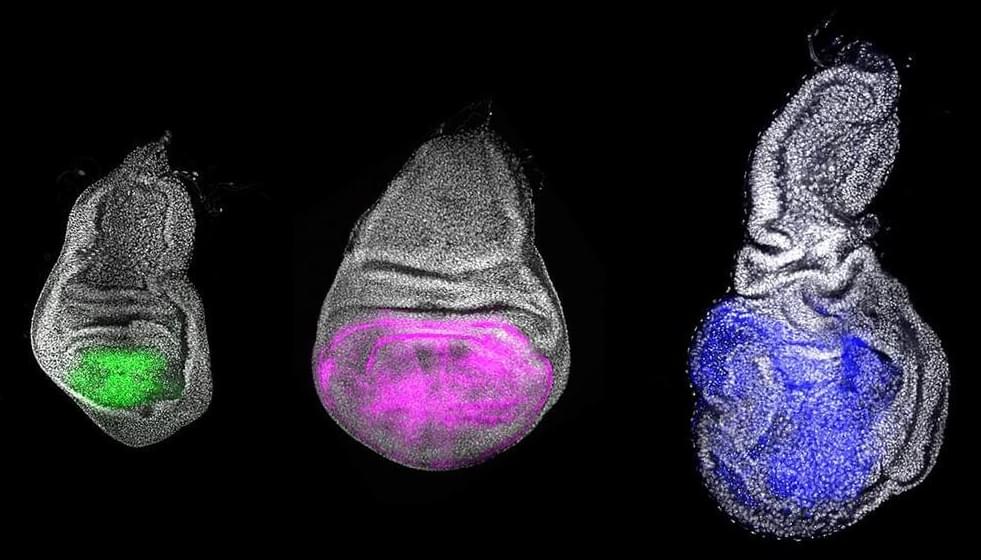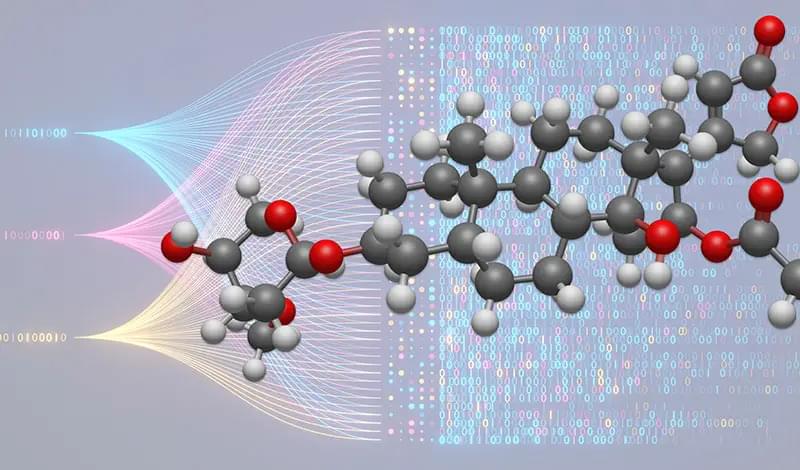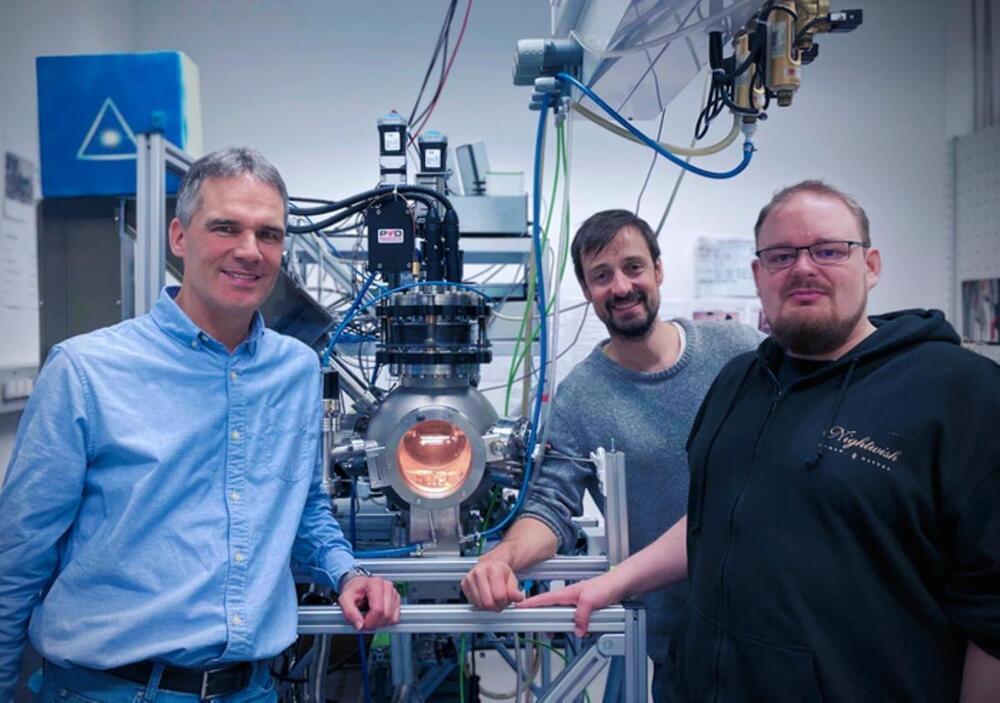Ultrasound is most familiar to us as a non-invasive imaging technology used during pregnancy – now it is in clinical trials as a powerful new tool for treating all sorts of medical conditions.
By Kayt Sukel

Ultrasound is most familiar to us as a non-invasive imaging technology used during pregnancy – now it is in clinical trials as a powerful new tool for treating all sorts of medical conditions.
By Kayt Sukel
Join us on Patreon! https://www.patreon.com/MichaelLustgartenPhD
Discount Links:
At-Home Metabolomics: https://www.iollo.com?ref=michael-lustgarten.
Use Code: CONQUERAGING At Checkout.
NAD+ Quantification: https://www.jinfiniti.com/intracellular-nad-test/
Use Code: ConquerAging At Checkout.
Epigenetic Testing: https://trudiagnostic.com/?irclickid=U-s3Ii2r7xyIU-LSYLyQdQ6…M0&irgwc=1
Use Code: CONQUERAGING
At-Home Blood Testing (SiPhox Health): https://getquantify.io/mlustgarten.
Oral Microbiome: https://www.bristlehealth.com/?ref=michaellustgarten.

Insects, with their remarkable ability to undergo complete metamorphosis, have long fascinated scientists seeking to understand the underlying genetic mechanisms governing this transformative process.
Now, a recent study conducted by the Institute for Evolutionary Biology (IBE, CSIC-UPF) and the IRB Barcelona has shed light on the crucial role of three genes – Chinmo, Br-C and E93 – in orchestrating the stages of insect development. Published in eLife, this research provides valuable insights into the evolutionary origins of metamorphosis and sheds new light on the role of these genes in growth, development and cancer regulation [1].
Longevity. Technology: Chinmo might sound like a Pokémon character, but the truth is much more interesting. Conserved throughout the evolution of insects, scientists think it, and the more conventionally-named Br-C and E93, could play a key role in the evolution of metamorphosis, acting as the hands of the biological clock in insects. A maggot is radically different from the fly into which it changes – could understanding and leveraging the biology involved one day allow us to change cultured skin cells into replacement organs or to stop tumors in their early stages of formation? No, Dr Seth Brundle, you can buzz off.

This study demonstrates that AI can be incredibly effective in helping us identify new drug candidates – particularly at early stages of drug discovery and for diseases with complex biology or few known molecular targets.
A machine learning model has been trained to recognise the key features of chemicals with senolytic activity. It recently found three chemicals able to remove senescent cells without damaging healthy cells.
Molecular structure of oleandrin. Credit: Mplanine, CC BY-SA 4.0, via Wikimedia Commons.
Senescent cells, often referred to as “zombie cells”, are cells that have stopped dividing but remain metabolically active. These cells increase with age and secrete harmful substances that can lead to chronic inflammation and affect the function of nearby cells. This contributes to aging and various age-related diseases like heart disease, diabetes, Alzheimer’s, and certain cancers. Their elimination or reprogramming is a key focus of aging-related research.

According to a news release from the Vienna University of Technology (TU Wien), oxygen-ion batteries don’t have the same aging issue that lithium batteries face, which means they can maintain effectiveness for an incredibly long period.
They can also be manufactured using incombustible materials and don’t require the same rare elements as lithium batteries, which means they won’t have nearly as substantial of an environmental footprint and won’t spontaneously explode if mishandled.
“In many batteries, you have the problem that at some point the charge carriers can no longer move,” said Alexander Schmid of TU Wien’s Institute for Chemical Technologies. “Then they can no longer be used to generate electricity, the capacity of the battery decreases. After many charging cycles, that can become a serious problem.”

Researchers have used a machine learning model to identify three compounds that could combat aging. They say their approach could be an effective way of identifying new drugs, especially for complex diseases.
Cell division is necessary for our body to grow and for tissues to renew themselves. Cellular senescence describes the phenomenon where cells permanently stop dividing but remain in the body, causing tissue damage and aging across body organs and systems.
Ordinarily, senescent cells are cleared from the body by our immune system. But, as we age, our immune system is less effective at clearing out these cells and their number increases. An increase in senescent cells has been associated with diseases such as cancer, Alzheimer’s disease and the hallmarks of aging such as worsening eyesight and reduced mobility. Given the potentially deleterious effects on the body, there has been a push to develop effective senolytics, compounds that clear out senescent cells.
Join us on Patreon! https://www.patreon.com/MichaelLustgartenPhD
Discount Links:
Telomere Length, Epigenetic Testing: https://trudiagnostic.com/?irclickid=U-s3Ii2r7xyIU-LSYLyQdQ6…M0&irgwc=1
Use Code: CONQUERAGING
NAD+ Quantification: https://www.jinfiniti.com/intracellular-nad-test/
Use Code: ConquerAging At Checkout.
At-Home Metabolomics: https://www.iollo.com?ref=michael-lustgarten.
Use Code: CONQUERAGING At Checkout.
At-Home Blood Testing (SiPhoxHealth): https://getquantify.io/mlustgarten.
Oral Microbiome: https://www.bristlehealth.com/?ref=michaellustgarten.
This research designed polymersomes with inhomogeneous membranes capable of programmed drug release with accurate control by modifying the molecular architecture and photo-cross-linking degree of the polymer. The process involved introduced crystalline PCL moiety as part of the membrane’s molecular structure via the synthesis of three polymersomes with different hydrophobic chains, PEO43-b-P(CL45-stat-CTCL25), PEO43-b-P(CL108-stat-CTCL16), and PEO43-b-PCTCL4-b-PCL79. As a result of the amorphous PCTCL moieties in the membranes, high permeability with finely tunable drug release rate was achieved. A series of mesoscopic dynamics (MesoDyn) simulations and doxorubicin release tests affirmed that the membrane permeability is indeed related to the membrane phase separation of the polymersome. In conclusion, membrane phase separation technique used for the modification of polymersomes improved programmed drug release rate; thus, promising great significance in the field of drug delivery.
In the field of biomedicine, small molecules relied on membranes such as polymersomes as carriers for drug delivery. Thus, the effectiveness and efficiency of drug delivery become key focus points when considering treatment development for a range of diseases, including cancer. Despite being heavily researched and among the promising choice as drug delivery vessels, conventional polymersome membranes lack efficiency due to its homogeneity, making it harder for the drug to be released. This led to recent research centering their attentions in modifying and customizing polymersome membranes to allow programmed release of small molecular drugs to meet the demands of biomedical practices. As a continuation of past efforts, this research intends to overcome the challenge of high permeability of the PCTCL-based polymersomes caused by their amorphous nature, rendering it efficient to deliver small molecules for broader applications.
As the global population continues to expand along with longevity, the importance and use of medicines are expected to increase. However, this will lead to a greater impact on the ecosystem and our health in the long term. Hence, there is a growing need to support precision medicine and to reduce ineffective medicine use which could burden patient, society and environment in the long run. The outcome of this research, the enhanced capability of programmed drug release via the modification of polymersomes, meets such demand. (SDG 3: Good health and well-being)

Researchers from North Carolina State University have identified a microRNA (miRNA) that could promote hair regeneration. This miRNA – miR-218-5p – plays an important role in regulating the pathway involved in follicle regeneration, and could be a candidate for future drug development.
Hair growth depends on the health of dermal papillae (DP) cells, which regulate the hair follicle growth cycle. Current treatments for hair loss can be costly and ineffective, ranging from invasive surgery to chemical treatments that don’t produce the desired result. Recent hair loss research indicates that hair follicles don’t disappear where balding occurs, they just shrink. If DP cells could be replenished at those sites, the thinking goes, then the follicles might recover.
A research team led by Ke Cheng, Randall B. Terry, Jr. Distinguished Professor in Regenerative Medicine at NC State’s College of Veterinary Medicine and professor in the NC State/UNC Joint Department of Biomedical Engineering, cultured DP cells both alone (2D) and in a 3D spheroid environment. A spheroid is a three-dimensional cellular structure that effectively recreates a cell’s natural microenvironment.
Some people choose cryopreservation after death, hoping future technology will revive them for eternal life.